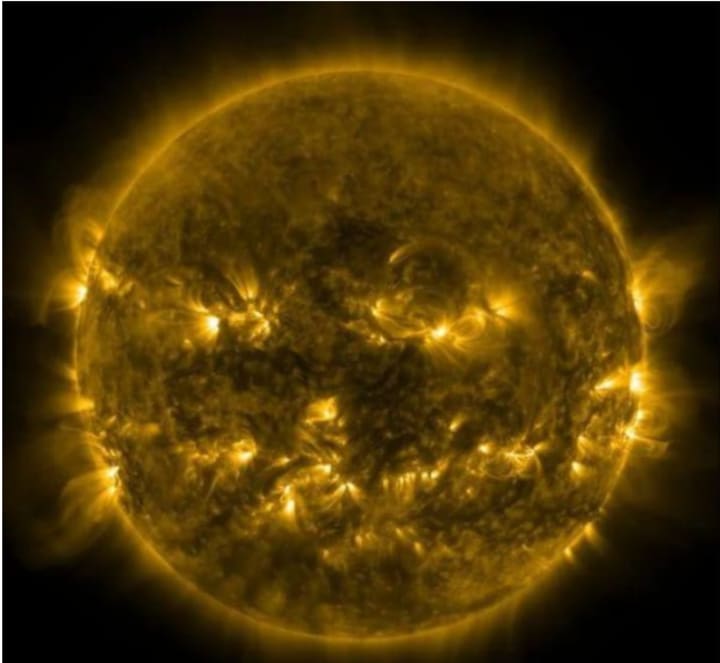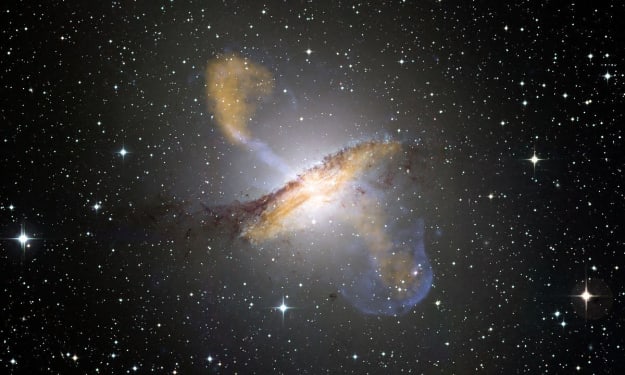Something weird is happening on the sun
Without the sun, there would be nothing.

According to a recent report on the Australian Science Alert website, something weird is happening in the sun.
So far, for almost every day in 2022, it has been erupting in the form of flares and coronal mass ejections, some of which are as intense as our star can make.
By itself, the Sun's eruptions are not surprising. It erupts periodically as it goes through periods of high and low activity in alternating cycles of about 11 years.
The sun is currently significantly more active than the official predictions of NASA and the National Oceanic and Atmospheric Administration for the current solar cycle, and it has consistently exceeded predicted levels since as early as September 2020. But even that is not so surprising, as one scientist who studies the Sun will tell you.
Michael Heartland, a solar astrophysicist at the University of Sydney in Australia, told the Science Alert website, "We can't reliably predict the solar cycle."
The solar cycle
Solar cycles have a huge impact on the solar system, yet are relatively poorly understood. Scientists have concluded that they appear to be inextricably linked to the Sun's magnetic field. The Sun's magnetic field envelops the Sun's surface in tangles, spirals, and loops.
Sunspots
About every 11 years, the Sun's magnetic poles flip, with the North Pole becoming the South Pole and the South Pole becoming the North Pole. This flip coincides with a phenomenon known as a "solar activity peak," which is characterized by peaks in sunspots, solar flares, and coronal mass ejection activity.
After this reversal occurs, the Sun's activity weakens and then intensifies again to a peak period. This is the period we are currently in - the upward phase of the current cycle. This is the 25th cycle since we started counting solar cycles.
Solar activity cycles are described and predicted based on one criterion: the number of sunspots observed. Sunspots are temporary regions where the magnetic field is particularly strong, thus making flares and coronal mass ejections prone to erupt. They look like black spots because the magnetic field inhibits the flow of incandescent ion bodies, so these regions are cooler and appear fainter compared to the regions around them.
According to Scott McIntosh, a solar physicist at the National Center for Atmospheric Research, predicting the solar cycle based on the number of sunspots we count is problematic. He told the Science Alert website, "The sunspot cycle is not the key issue. It is a secondary issue. The way the rules are made, the way the textbooks are written, and the way the solar activity is presented, are the things that are called critical. The problem is that the sunspot cycle is not the key, the Hale cycle - the 22-year magnetic cycle - is the key. And the black cycle is just one piece of this bigger picture."
The Hale cycle was discovered by American astronomer George Celery Hale in the early 20th century. It consists of two 11-year sunspot cycles - the time it takes for the sun's poles to flip twice and thus return to their original positions.
The Hale cycle, in contrast to the 11-year sunspot cycle, can be observed through several phenomena. The polarity of the blacken and solar magnetic poles - as well as the intensity of the galactic cosmic rays reaching Earth - are constantly changing.
The Sun's activity makes it more difficult for cosmic rays to reach Earth, but solar cycles with odd and even rows have different cosmic radiation waveforms. This has been attributed to the polarity of the Sun's magnetic field.
What causes sunspots? According to existing models, they are thought to be related to the rotation of the Sun. The rotation of the Sun's equator is faster than that of the poles. If straight magnetic field lines traveling along the longitudinal direction were to try to keep up with this rotation, they would be stretched and eventually become entangled, resulting in temporary, localized regions of strong magnetic fields, known as sunspots.

About 60 years ago, scientists approximated these magnetic fields as insignificant compared to the fluids on the sun for ease of understanding," McIntosh said. Thus, when the Sun is circulating - as our Earth is - the warming of the atmosphere will drive the circulation, and with that circulation ongoing, the magnetic fields will be pulled by the circulation and follow it."
The animation showing this effect matches the sunspot observations remarkably well - the initial magnetic field appears in a region of about 30 degrees latitude. But, according to McIntosh and colleagues, that's because the model was created to explain this - and only this - phenomenon.
An alternative explanation exists: sunspots are interference patterns generated by the magnetic fields of overlapping Hale cycles. McIntosh and colleagues first noticed an apparent pattern in sunspot data in 2011, an overlap in the so-called butterfly diagram. Butterfly diagrams are maps of the distribution of sunspots plotted with latitude as the vertical coordinate and time as the horizontal coordinate.
Magnetic field activity
Once these researchers saw this phenomenon, they sought out as much black data as they could get their hands on and studied it. This data date back to the 1860s.
They found that this overlap continued to occur. Towards the end of a given sunspot cycle, the appearance of a sunspot belonging to the next cycle can be observed in the mid-latitude region as the sunspot looks closer and closer to the equator.
The researchers found that these graphs represent banded magnetic activity that cyclically crosses the Sun with reverse polarization: they are responsible for the sunspot cycle rather than being influenced by it. Moreover, these cycles can interact: when two cycles of opposite polarity overlap, they interfere with each other.
The result of this interference is that their magnetic field systems work together to suppress the production of sunspots, and so a period of minimal sunspot activity ensues.
About the Creator
Cindy Dory
When you think, act like a wise man; but when you speak, act like a common man.
Enjoyed the story? Support the Creator.
Subscribe for free to receive all their stories in your feed. You could also pledge your support or give them a one-off tip, letting them know you appreciate their work.






Comments
There are no comments for this story
Be the first to respond and start the conversation.